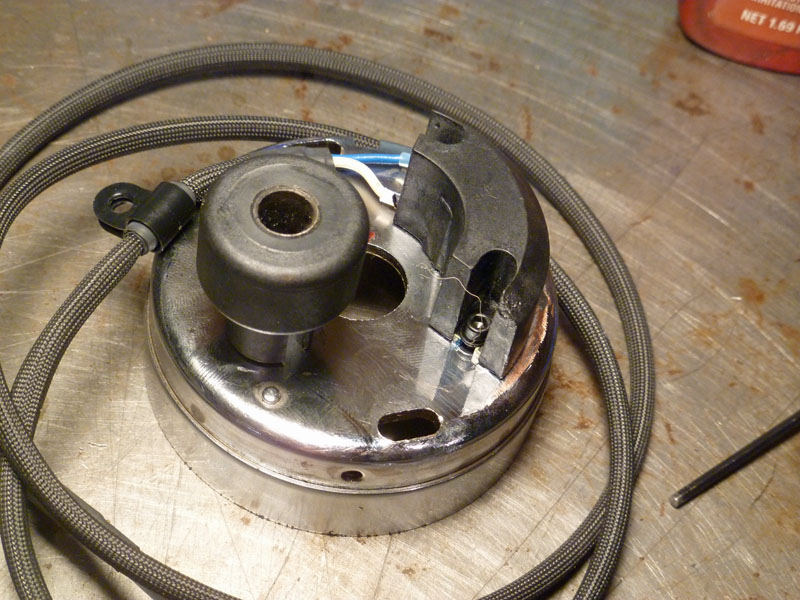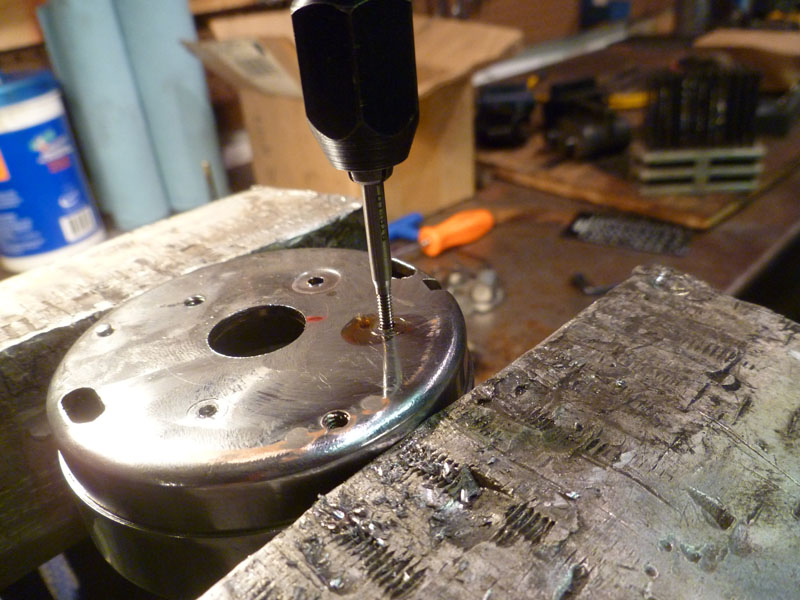Cars and trucks are a necessary evil. With that said, if you’ve gotta have one (and motorcycles were my sole transportation in life until a few years ago) you might as well have a cool one that can haul motorcycles if necessary. I’ve had a ’59 Chevy Apache for about five years now. It was pretty raw, but evolves slowly as I make incremental improvements. This latest round had me adding a vacuum advance and rebuilding the stock AC/Delco distributor to house a much more recent vintage HEI ignition. The idea and motivation came from Young Dan, who had done it to his ’59 Ford. Thanks Dan.
Per my usual approach, I did my best to hide these modifications and to use as many original or factory parts as possible. It’s not like you can’t tell it’s there, but I didn’t want some big honking red MSD box hanging off the motor either. Wouldn’t seem right. So about two weeks ago we were hanging around the shop and I dug in. Ripped the distributor out after marking some reference points and started taking things apart. Up until that point I had been running fixed timing as I’d previously welded the two timing clamp pieces together due to a shot advance can. A little surgical grinding and they were free again and ready for reuse.
Without getting too much into it, here’s a little background on what changes were made. You can lookup the benefits of vacuum advance elsewhere. The HEI controller is a contact-less pickup and coil controller (makes the coil fire the plugs at the right time) that costs about $20 at any auto parts store. Dime a dozen. Easy to replace. These means no more setting points, more stable ignition, smoother idle and no regular adjustments of any sort required.
Parts used were the stock Delco distributor, a new advance can, a Chrysler slant-six reluctor and pickup and an aftermarket HEI controller and heat sink. I think the whole project cost around $60.
It came out great. Starts right up and runs like a whole new truck. Details in the pictures.
Jason
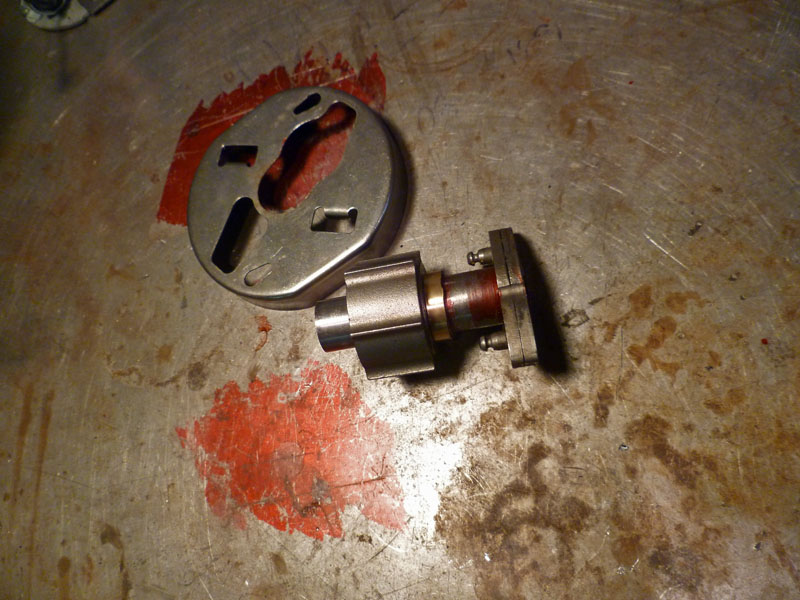
First step was to remove the point cam and grind/file it down as round as possible. Couldn’t use a cutter on the lathe as this part is hardened and precision ground. Once reasonably round, I made a somewhat thin brass bushing and pressed it over the eccentric area. The bushing deformed to some extent, which is what I wanted. Then I mounted the part in the lathe and turned the bushing perfectly round for an interference fit with the reluctor. Some people use epoxy to mount the reluctor, which might be perfectly functional, but you know I don’t glue things together in the shop! I was careful to mount the reluctor peaks where the old point cam peaks were for proper indexing.
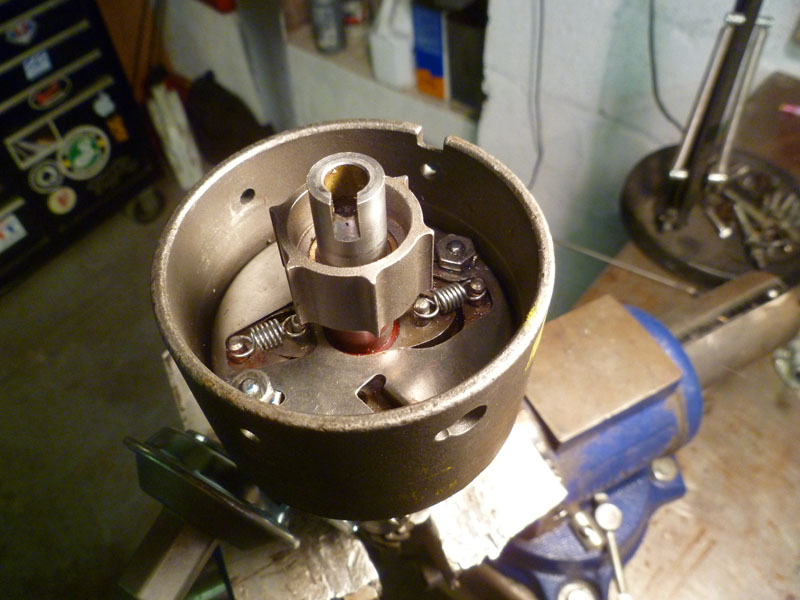
The newly modified reluctor carrier mounted in the distributor with the centrifugal advance weights rebuilt and checked. This particular weight set allows for 31deg of mechanical advance (actuated by increased rpm).
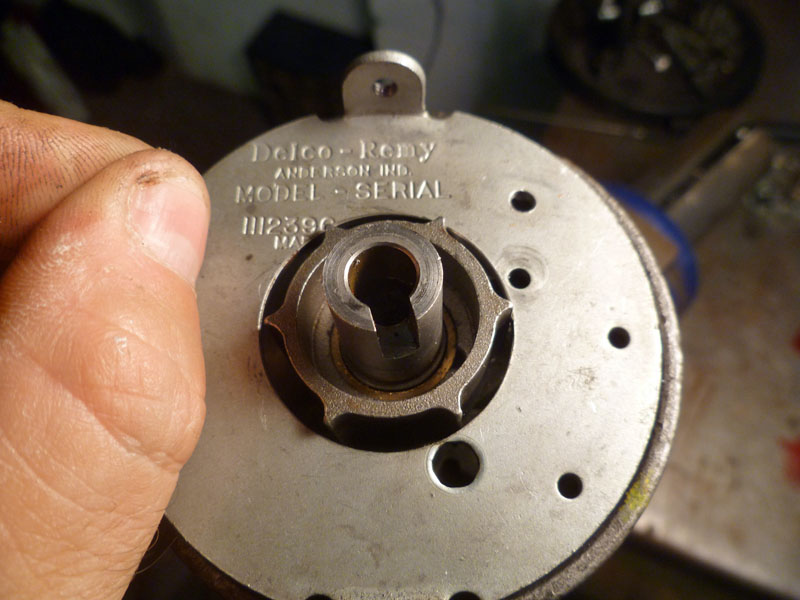
I had to machine the original points plate so that it would fit over the new reluctor while still allowing for mounting the reluctor pickup. One requirement of this project was that all internal parts still be serviceable. Some people (you know who you are) install the reluctor after the weights and plate are installed, leaving you with a permanent alteration and no way to service the weights in the future.
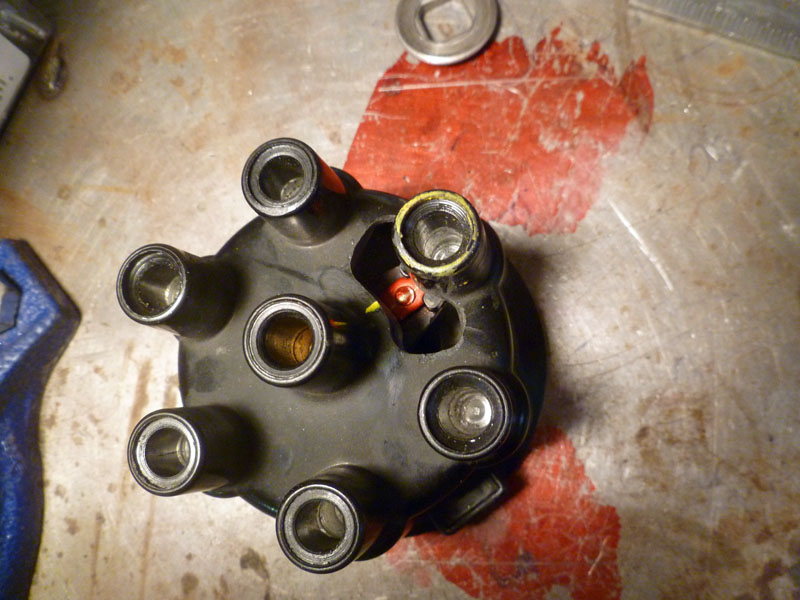
One of the challenges of this conversion was to index the contact rotor (which carries the secondary coil voltage to the appropriate spark plug wire post) properly so that it is adjacent to an internal terminal post when the coil fires. Seems it’d be tough to figure just where the rotor was while setting things up so I made an inspection cap with a hole hogged out (technical term) in it. This made things much easier. Note the scribed line on the rotor and reference marks in yellow on the cap. This allowed me to check rotor phasing while the motor was running with a timing light after all the other work was completed.

